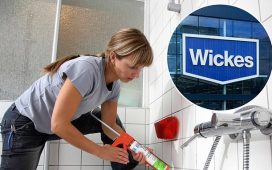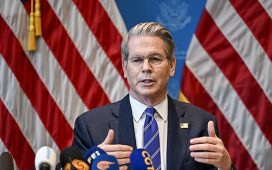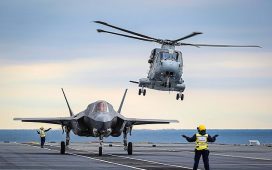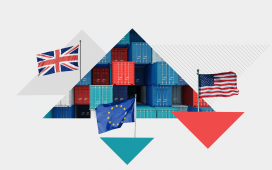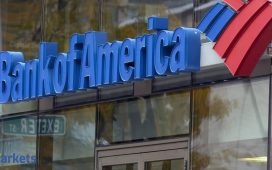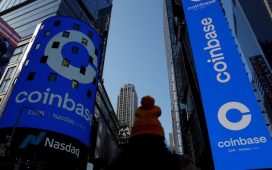Mention the US Magnificent Seven and talk of Europe’s so-called “GRANOLAS” shares is rarely far behind. In contrast, though, GRANOLAS have been dragging on European equity markets this summer.
Goldman Sachs analysts coined the term in 2020 to describe the shares of eleven large companies across Europe and the UK:
• GSK (GSK)
• Roche (ROG)
• AstraZeneca (AZN)
• Novo Nordisk (NOVO B)
• Nestlé (NESN)
• Novartis (NOVN)
• L’Oréal (OR)
• LVMH (MC)
• ASML (ASML)
• SAP (SAP)
The main difference between the Magnificent Seven and these European counterparts is one of concentration: the extent to which investor success becomes dependent either on specific companies or sectors. While the Magnificent Seven’s success is largely a success of technology, the GRANOLAS span a wider range of sectors from luxury goods to pharmaceuticals. That diversity means GRANOLAS don’t always move in tandem.
Nicolò Bragazza, associate portfolio manager at Morningstar Wealth, notes that since early July, GRANOLAS have negatively impacted the European equity market due to the performance of the group’s largest stock by market capitalisation: Novo Nordisk. Shares in the Danish pharmaceutical company are down -11% from their June 25 peak.
Europe’s second-largest stock by market cap and fellow GRANOLAS constituent ASML declined 16% during the same period while another tech company, software giant SAP, helped offset this drag.
SAP Buoys Floundering GRANOLAS
SAP (SAP), the £199.3 billion German multinational software business, was a considerable performance driver, posting the highest year-to-date return in the group of nearly 40%. It has defied the odds by beating rivals WorkSpace and Salesforce in the enterprise app space.
“Since the beginning of the year, their contribution to European market performance has been strongly positive, led by the tech stocks SAP and ASML and by pharmaceutical companies, which have generally offset the negative performance of consumer names,” Bragazza says.
Although the business announced a restructuring plan, SAP’s revenues rose 10% in the second quarter, beating expectations. At the heart of the success was its cloud business, whose revenues jumped 25% while sales in its cloud SaaS division, another key battleground vis-a-vis Salesforce, jumped 33%.
For Steve Bolton, fund manager of the Morningstar Gold-Rated Royal London European Growth Fund, SAP’s success is the result of technology improvements.
“Technology and the potential to profit from developments in artificial intelligence (AI) continued to drive up investments in the information technology sector in the second quarter, albeit not at the same pace as in the first quarter of the year,” he says.
“SAP is currently benefitting from tailwinds in cloud computing and, having appointed a new chief finance officer in 2023, is working hard to ensure its cost base is appropriate, potentially leading to increased profits in the future.”
Weight Loss Drug Rally Supports Pharma Shares
Besides technology shares, pharmaceuticals were the GRANOLAS group’s stand-out performers this year– especially when they were exposed to the diabetes and weight loss theme.
“Innovation in the sector continues to excite investors as they attempt to ascertain the size of the market and who the likely winners are,” Royal London’s Bolton says.
Novo Nordisk has consistently led this field because of the popularity of its weight loss drugs Wegovy and Ozempic. Wegovy has just been approved for use in China and the company is also planning to invest billions of dollars in the US to expand its manufacturing capabilities.
After a difficult July, the company’s year-to-date return remains high at 24%, followed by rivals Novartis (NOVN), Roche (ROG), Sanofi (SAN) and GlaxoSmithKline (GSK).
Novo Nordisk has had a head start in the weight loss drug space. Thomas Lemaigre, co-portfolio manager of the Morningstar Bronze-Rated Janus Henderson European Selected Opportunities Fund, believes Roche is a peer to watch closely.
“Despite the fact that it does not have a drug that is currently on the market for weight loss, [Roche] has come up with some phase one data in very small population size that showed they might have an obesity drug that is interesting and that could come to the market by the end of the decade,” he says.
“From a positioning standpoint Roche has not performed well and so people think it is cheap. It should be defensive, and if you have this obesity angle on top, it might be worth looking at. That partly explains Roche’s performance.”
Over in London, pharmaceutical giant AstraZeneca (AZN) is up 18% year-to-date. The company is the largest stock listed on the London Stock Exchange with a market capitalisation of £196.4 billion. Year-to-date, it has outperformed the Morningstar UK Index, which returned 8%.
Meanwhile, GlaxoSmithKline (GSK) underperformed rival AstraZeneca and the index, reporting a 6% return rate over that same period. AstraZeneca was bolstered by strong sales growth in the first half of the year, as revenue from its chemotherapy drug Enhertu – which is made in collaboration with Daiichi Sankyo – leapt to £19.96 billion on a 46% increase in sales.
Bragazza notes AstraZeneca and GSK have been positive contributors to the Morningstar UK index on a year-to-date basis, but they too have dragged on its performance over the last month. GSK, which is still dogged by the fallout from litigation it settled over heartburn drug Zantac, has been a contributor to negative sentiment.
China Slowdown Deflates Luxury Giants
The worst performers in the GRANOLAS group have been companies most exposed to consumer sentiment.
French luxury giant LVMH, which last year became the first European company to reach a $500 billion market cap, has had a rude awakening with its year-to-date return rate dropping below 0 to –12%. At EUR 636, it now trades close to Morningstar analyst Jelena Sokolova’s fair value estimate of EUR 650
Will James, portfolio manager at Guinness Asset Management, says LVMH has suffered due to a slowdown in spending on luxury goods in China.
“The big problem for luxury in general is that a lot of the growth post-Covid was driven by the aspirational consumer,” he says.
“However, as things have got tighter with rates going up, with pressures from inflation coming through, people have less extra money in their pocket where they would normally have treated themselves by going to buy a wallet or a handbag.”
In his view, the market has focused on luxury goods benefiting from the rise of the middle class in China but has been late to recognise that with interest rates increasing globally, the aspirational consumer is now more worried about how they pay for basics.
L’Oreal (OR) and Nestlé (NESN) also underperformed, reporting losses of -14% and -10% respectively this year, while the Morningstar Europe index gained 5% during the period.
Opportunities in Defence and Banks
Some fund managers aren’t focused on the GRANOLAS at all, however, keeping an eye on outperforming sectors that aren’t represented in the group.
Christopher Garsten, co-portfolio manager of the Morningstar Silver-Rated Waverton European Capital Growth Fund, has sought opportunities outside the leading eleven.
“Some of our best stocks have been in defence,” he says.
“That has come from the complete unwillingness to touch them, to them suddenly becoming a respectable investment again. Also, the demand for their products is sharply rising.”
Garsten is invested in Norwegian defence group Kongsberg Gruppen (KOG) and the Spanish defense-software business Indra Sistemas (IDA0). Both report a 119% and 19% year-to-date return, respectively.
“Kongsberg does a lot in the way of missiles and air defence systems,” he says. “The company was doing quite well before Ukraine but post-Ukraine their demand soared. We also have a smaller position in Indra, and we feel its software will be a key avenue of growth.”
Meanwhile, Thomas Lemaigre of Janus Henderson sees positive prospects coming from the banking sector, with a particular focus on Italian and Spanish names.
Milan-based UniCredit (UCG) has returned 37% year-to-date, and Spanish bank Banco de Sabadell (SAB) has returned 55% over that same period, amid an ongoing takeover battle as rival BBVA (BBVA) seeks to acquire the Catalan bank.
“Volumes in terms of renovation and new-build in Italy and Spain are doing ok, and the banks are often a proxy for the economies they operate in, and Italy and Spain have not done too badly,” he says.
“It is also to do with duration and how long we see the net interest margin lasting. Ultimately these banks have got more direct exposure to specific economies.”
Eurozone banking stocks returned 19% this year through August 8, doing significantly better than the Morningstar Eurozone index, which tracks the performance of wider eurozone markets and gained just 3.7% over the same period.

